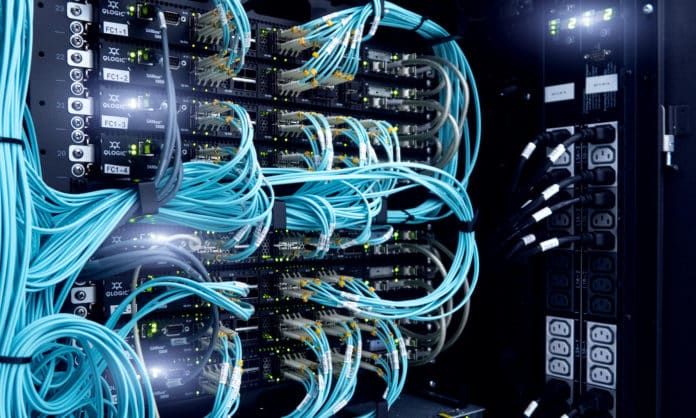RAID 10 is one of the most commonly used levels of RAID, a four-decades-old technology that combines pre-determined configurations with disk arrays to improve performance and reliability when storing data on multiple hard disks. RAID offers greater access speed, data security, and overall fault tolerance over single disk configurations, and RAID 10—a combination of RAID levels 0 and 1–brings even better performance. This guide covers what RAID 10 is, how it works, and how it compares to other RAID levels.
What is RAID 10 and How Does it Work?
RAID stands for Redundant Array of Independent Disks or Redundant Array of Inexpensive Disks. The basic idea behind RAID is that it allows multiple drives to be configured as a single unit, providing a greater fault tolerance that lets systems operate at a reduced level after a single disk failure rather than failing completely.
RAID is most commonly used in Network Attached Storage (NAS) devices or servers, and is more common for business use cases than consumer or personal ones. Generally speaking, in a two-or-more disk system, a RAID controller or driver manages the disks using three main approaches depending upon the configuration: striping, mirroring, or parity.
RAID 10 requires at least four physical disks and a RAID compatible disk controller. Whenever data is written to the server, it is written across several disks at the same time. It essentially combines the features of both RAID level 0—which stripes volume data across several drives in order to increase performance—and RAID level 1, which duplicates data with disk mirroring. Since it doesn’t manage parity, it offers quicker data read/write speeds than either of the other levels as well.
RAID 10—or any RAID level for that matter—is not a replacement for backup solutions. If one disk becomes corrupted, it’s possible for the data on the other disks to follow suit. A true backup means that data has been copied and stored in another location where it cannot be corrupted.
Read more about Best Enterprise NAS Devices.
RAID Levels Explained
There are multiple levels of RAID that use different configurations to provide better performance and fault tolerance. The levels rely upon different numbers of disks as well as different technologies, including mirroring, striping, and parity.
Mirroring is simply making an identical copy of data on a second disk—it’s expensive, as it requires twice as much media. Striping is a way of looking at multiple addressable storage blocks across multiple disks and determining how to spread out the data. Parity is a redundancy check that protects the data by adding an additional disk to the striping configuration, and does not require a full duplicate.
RAID 0
Designed to improve disk speed by breaking code down into blocks of data; as a tradeoff, it does not provide data protection.
RAID 1
This mirrored array approach makes duplicates of data written between two or more disks of equal sizes; no parity or striping is used.
RAID 2
This rarely used configuration is configured as a striped array with error correction that stripes information in smaller bits.
RAID 3
This configuration uses a dedicated parity disc for byte-level striping, but is ineffective for smaller disc read/write processes.
RAID 4
This configuration uses block-level striping with a dedicated parity disc, and is capable of performing longer read/write processes than RAID 3.
RAID 5
In this setup, block-level striping is done using distributed parity to even out read/write processes across multiple discs, making it more effective than RAID 4.
RAID 6
Nearly identical to RAID 5, this configuration uses block-level striping with dual distributed parity using several parity blocks for each disk.
RAID 10: Advantages and Disadvantages
Of the many RAID levels, RAID 10 is the best choice for database implementations and hosting servers due to its superior overall performance and fault tolerance. It combines the mirroring protection of RAID 1 with the performance enhancements of RAID 0.
Since it doesn’t manage parity, RAID 10 doesn’t require checks and therefore provides reading performance twice as fast as RAID 5. For the same reason it can provide faster data reconstruction speeds if a single disk fails. It’s also easier to configure.
RAID 10 is most often compared to RAID 5, as the two are the most commonly used configurations. The biggest difference between them is in the way data is rebuilt. Both RAID 5 and RAID 10 have a maximum fault tolerance of just one disk and a total capacity of 8 TB.
With RAID 5, if one disk fails the system will read the parity data from each of the other discs to reconstruct that data—this system is effective but time-consuming, and puts greater stress on the system. With RAID 10, it will read the data from a mirror disk and then copy it over to the replaced disk, ensuring no change in read/write operations and improving speed.
RAID 5 is slower, but more efficient—it uses distributed parity—and cheaper than RAID 10, as it only requires three disks to configure.
Bottom Line: RAID 10
RAID 10 offers superior speed, resilience, and overall performance than other RAID levels when it comes to storing information on hard disks. While more expensive—it requires at least four disks—RAID 10 is also less complicated to implement than RAID 5, the next most common RAID level, and offers faster read/write speeds.
Read next: Top Data Center SSDs



